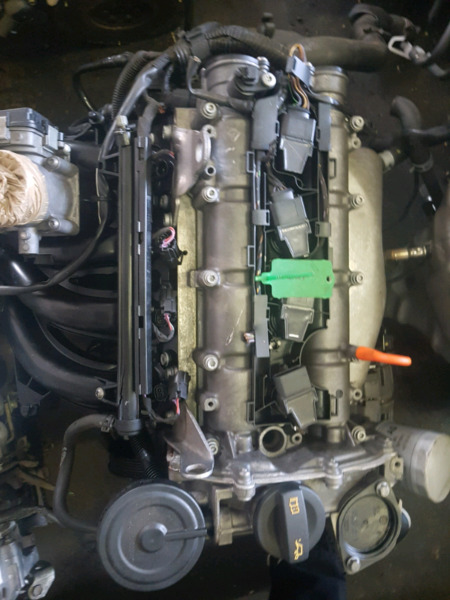Keep consistent power with a high-performance clp engine.
Just How a Clp Engine Can Enhance Performance in Numerous Industries
The introduction of CLP engines marks a considerable shift in functional performance across different fields, driven by their ability to enhance fuel intake and decrease downtime. As organizations significantly focus on sustainability along with performance, the duty of CLP engines comes to be even more important.
Review of CLP Engines
CLP engines, or Continual Liquid Propellant engines, represent a significant advancement in propulsion technology, specifically for room applications. These engines use a continuous feed system that allows for the continual expulsion of propellant, causing enhanced efficiency and efficiency contrasted to conventional solid or hybrid propulsion systems. By keeping a continuous flow of fluid propellant, CLP engines can accomplish more specific thrust control, which is essential for maneuvering spacecraft in numerous mission circumstances.
The style of CLP engines integrates sophisticated materials and cutting-edge fuel administration systems. clp engine. This causes decreased weight and increased integrity, vital factors for long-duration area missions. Moreover, the continuous operation decreases the danger of burning instability, a common obstacle in conventional rocket engines.

Benefits in Production
The production of Continual Liquid Propellant (CLP) engines provides several noteworthy advantages that boost both performance and cost-effectiveness. One of the primary benefits is the structured manufacturing process, which decreases the complexity related to standard propulsion systems. By using liquid propellant, manufacturers can attain better precision in engine performance, leading to maximized power outcome and lowered waste.
In addition, CLP engines assist in a higher level of modularity, enabling less complicated combination right into various manufacturing lines. This versatility can significantly decrease lead times and improve general functional flexibility. Making use of CLP technology also has a tendency to reduce the need for considerable upkeep due to less moving components, which translates right into reduced downtime and functional expenses.

Applications in Logistics
Leveraging Constant Fluid Propellant (CLP) engines in logistics offers substantial advantages in functional performance and integrity. These engines offer a robust remedy for various transportation requirements, making it possible for the seamless movement of items throughout substantial ranges. The intrinsic style of CLP engines enables constant power output, which translates right into smoother and extra predictable transportation timetables.
One of the essential applications of CLP engines in logistics is in sturdy products transport, where they can drive both ground and aerial lorries. Their capacity to preserve high performance under varying lots problems guarantees that delivery timelines are fulfilled, therefore improving client contentment. Additionally, CLP engines can be integrated into automated logistics systems, facilitating real-time monitoring and enhancing route preparation.
Furthermore, the sturdiness of CLP engines decreases upkeep downtime, permitting logistics firms to maximize their operational capacities. This is especially advantageous in warehousing procedures, where effectiveness in handling and moving products is important. As logistics remains to evolve, the combination of CLP engines stands for a forward-thinking technique that not just enhances efficiency but additionally supports the market's growing needs for reliability and rate.
Influence On Energy Performance
How do Constant Fluid Propellant (CLP) engines improve power efficiency in transportation? CLP engines make use of a constant circulation of liquid fuel, maximizing combustion processes pop over to this web-site and keeping a stable thrust outcome. This layout reduces energy losses connected with conventional burning engines, where fuel delivery can vary and result in ineffectiveness.
The continual procedure of CLP engines allows for a more efficient thermal cycle, causing higher certain impulse contrasted to standard engines. clp engine. This translates to minimized gas intake for the same amount of work done, substantially decreasing functional costs across various transportation fields, consisting of aviation and maritime industries
Furthermore, the capability of CLP engines to preserve optimum efficiency under differing lots problems lowers the need for frequent acceleration and deceleration, even more enhancing fuel efficiency. Improved energy efficiency not only contributes to cost savings but also results in reduce greenhouse gas discharges, lining up with global sustainability goals.
Future Trends and Innovations
Arising advancements in Continuous Fluid Propellant (CLP) engine technology promise to revolutionize the landscape of transport effectiveness and sustainability. As markets pivot toward greener alternatives, CLP engines stand at the forefront, incorporating cutting-edge materials and design methodologies that improve performance while lessening environmental impact.
Among one of the most promising trends is the fostering of hybrid systems that combine CLP engines with eco-friendly power sources. This synergy can maximize fuel intake and minimize discharges, aligning with international sustainability goals. Moreover, innovations in computational liquid characteristics (CFD) are assisting in the design of even more aerodynamically effective engines, leading to minimized drag and improved gas efficiency.
In addition, the advancement of clever monitoring systems is established to enhance functional efficiencies. These systems utilize data analytics and IoT innovation to optimize engine performance in real-time, making certain that the engines operate within their most effective parameters.
As research click here to find out more study proceeds to explore alternate propellant solutions-- such as biofuels and synthetic fuels-- the future of CLP engines looks encouraging. By harnessing these advancements, industries can not only enhance their performance but likewise add dramatically to a cleaner, much more lasting future in transport.
Conclusion
In final thought, CLP engines represent a substantial improvement in performance throughout several markets. The assimilation of innovative materials and less relocating components lessens maintenance requirements, while alignment with sustainability objectives placements CLP engines as an essential innovation for the future.